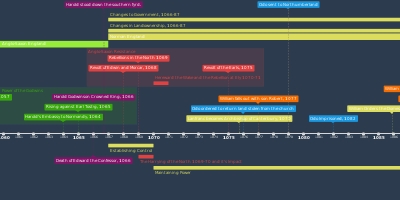sep 22, 1075 - Lanfranc becomes Archbishop of Canterbury, 1070
Description:
The Role of the Church:-A Major Landowner
The church collected taxes and kept strict records f what was owed.
-Laws and Legal Documents
Kept records of documents which allowed bishops and abbots to act as judges in courts.
-Knight Service
Church leaders also owed William knight service which meant they also had a military role.
-Well-educated Leaders
Bishops' education meant they often acted as the king's advisors and acted as regents in his stead.
Appointment of Lanfranc:
Stigand had been appointed Archbishop of Canterbury as he had been loyal to Harold Godwinson. He was a pluralist, meaning he had more than one job within the church and was often accused of simony.
Lanfranc wanted to rid the church of corruption and set it apart from the rest of society. He was given more control of the church than Stigand had been given.
Reforms:
-Celibacy became compulsory in an attempt to make priests live more spiritual lives.
-Bishops' courts were set up so church members would be trialled apart from society.
-More monasteries were built to make the Norman church's messages more widespread.
-Anglo-Saxon churches were destroyed and rebuilt in Norman-style.
-More archdeacons were appointed so dioceses were easier to control.
Normanisation of the Church:
-The archdeacons and bishops influenced the messages people received about the king and religion.
-The church became a major landholder which reduced chances of Anglo-Saxon rebellion.
-Priest were under stricter control and had to spread Norman messages.
Benefits for William:
-Bishops had to pay homage to the king.
-William chose the successor of a bishop.
-William controlled the communication between the church and the pope.
Added to timeline:
Date:
sep 22, 1075
Now
~ 950 years ago
